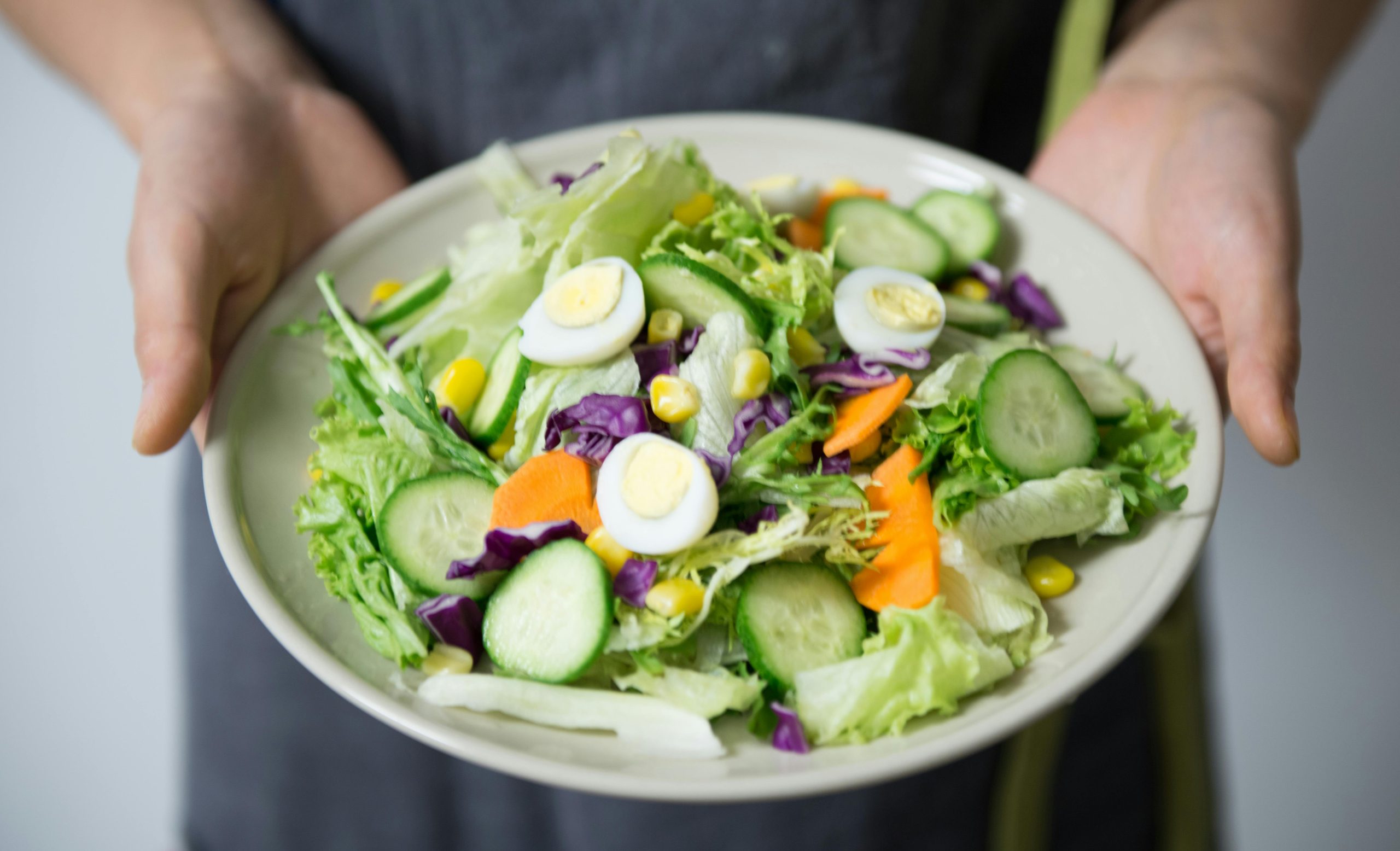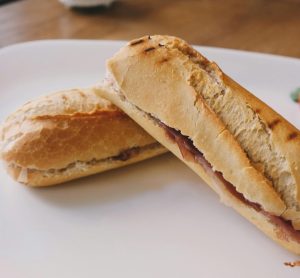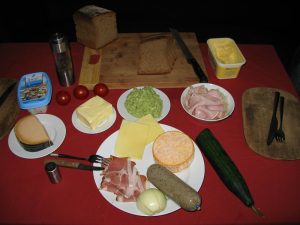6.6 Schwarzes Brot macht Wangen rot

Guten Tag!
Zum Aufwärmen machen wir unseren Tagesminiplausch und eine Wiederholung.
Wiederholung
In the previous lesson, you learned to discuss differences between German and American Frühstück and some food items you might eat in America and Germany. Let’s review what you have learned.
Was isst du zum Frühstück? Answer the question in your written journal by listing the foods you typically eat for breakfast. Then record your answer in your audio journal.
Lektionsüberblick
In both Germany and in the US, we typically talk about having three square meals a day (drei anständige Mahlzeiten), breakfast (Frühstück), lunch (das Mittagessen), and dinner (das Abendessen). As we saw in Lektion 6.5, there are differences between what a traditional breakfast looks like in each country. The midday and evening meals present even bigger differences. Traditionally, Germans eat eine warme Mahlzeit (a warm meal) at the midday meal and eine kalte Mahlzeit (a cold meal) in the evening – the reverse order of the typical American diet.
This lesson will focus on die kalte Mahlzeit, often called Brotzeit (=bread time), because Germans typically have bread with cold cuts and cheeses for dinner. In the end, you will be able to 1) recognize words for die kalte Mahlzeit, 2) say when you eat your kalte Mahlzeit, and 3) say what you typically eat for your kalte Mahlzeit.
1) die kalte Mahlzeit
What foods might be included in die kalte Mahlzeit? Look below for some words you know, as well as new ones. Which words are similar to English? Be sure to click through to the second slide.
Brettljause im Blickpunt
 Die Brettljause (wörtlich: Snack auf einem Holzbrett) ist eine rustikale kalte Mahlzeit, die typischerweise auf einem Brettl serviert wird und in Almhütten, Landgasthöfen und österreichischen Weinstuben beliebt ist. Sie ähnelt einer Wurstplatte, ist aber sättigender und enthält Käse, Wurstwaren, Gemüse und herzhaftes Brot. Sie ist eine Gelegenheit für Spaß und Geselligkeit und wird oft nach einem Wandertag genossen.
Die Brettljause (wörtlich: Snack auf einem Holzbrett) ist eine rustikale kalte Mahlzeit, die typischerweise auf einem Brettl serviert wird und in Almhütten, Landgasthöfen und österreichischen Weinstuben beliebt ist. Sie ähnelt einer Wurstplatte, ist aber sättigender und enthält Käse, Wurstwaren, Gemüse und herzhaftes Brot. Sie ist eine Gelegenheit für Spaß und Geselligkeit und wird oft nach einem Wandertag genossen.
Brettljause (literally, snack on a wooden board) is a rustic cold meal, typically served on a wooden board (Brettl), and it’s popular in alpine huts, countryside taverns, and Austrian wine taverns. It’s similar to a charcuterie board but more filling, with cheeses, cured meats, vegetables, and hearty bread. It is a time for fun and socializing and is often enjoyed after a Wandertag, a day of hiking.
Jetzt bist du dran!
2) Ich esse mittags/abends kalt.
Do you ever eat a cold meal for lunch or dinner? Remember the words from past lessons that you have learned to describe frequency. Review those below. Be sure to click through each slide. There are two sets of arrows.
Jetzt bist du dran!
3) Ich esse… mittags/abends
Was isst du mittags? Was isst du abends? What do you regularly eat for lunch? For dinner? Let’s talk specifics now. Look at the examples below. – This lesson is focusing on the kalte Mahlzeit. Lektion 6.8 will focus on warme Mahlzeiten (warm meals)
 |
 |
 |
| Ich esse einen Salat mittags. | Ich esse ein belegtes Brot abends. | Ich esse eine Suppe mittags. |
Let’s practice.
Jetzt bist du dran!
Zum Schluß
 In this lesson, you learned to 1) recognize words for die kalte Mahlzeit, 2) say when you eat your kalte Mahlzeit, and 3) say what you typically eat for your kalte Mahlzeit.
In this lesson, you learned to 1) recognize words for die kalte Mahlzeit, 2) say when you eat your kalte Mahlzeit, and 3) say what you typically eat for your kalte Mahlzeit.

*As you conclude this lesson, don’t forget to check Canvas!*
Before you go!
Check out this related content:

Media Attributions
- Private: 1010-at-banner-large
- Photo of Brettljause by Johann Jaritz – Own work, CC BY-SA 3.0, https://commons.wikimedia.org/w/index.php?curid=815993
- Photo of sandwich by pexels-brigitte-tohm-36757-186861

